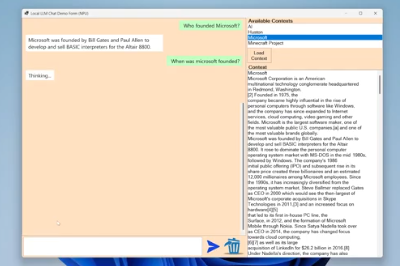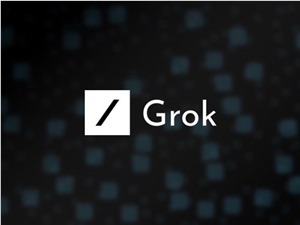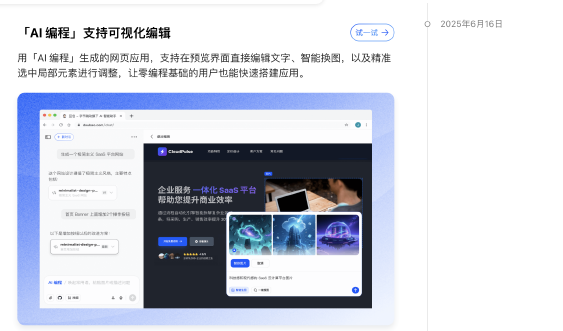Microsoft has officially announced the launch of a new device-side small language model (SLM), Mu, designed as an intelligent AI agent for the Windows 11 Settings app, marking a significant breakthrough in localized AI technology within operating system interactions. As a compact and efficient model, Mu is optimized to run on the neural processing unit (NPU) for low-latency, high-privacy natural language interaction experiences. AIbase has compiled the highlights and industry impact of Mu, inviting you to explore further.
Mu: The Intelligent Core Designed for Windows Settings
Mu is an encoder-decoder language model with 330 million parameters, optimized for the NPU on Co-pilot+ PCs, aiming to simplify Windows settings operations through natural language instructions. For example, users can simply say "turn on dark mode" or "increase screen brightness," and Mu will directly access the corresponding settings function without manually navigating complex menus. This AI agent is now available for testing on the Co-pilot+ PCs in the Windows Insiders Dev Channel, supporting accurate understanding and execution of hundreds of system settings.

The Key Features of Mu Include:
Efficient Local Processing: Runs entirely on the device, with response speeds exceeding 200 samples per second, reducing first-word generation latency by about 47%, and improving decoding speed by 4.7 times.
Privacy-Focused: Local processing does not require sending user data to the cloud, significantly enhancing data security.
Hardware Integration: Deeply compatible with the NPU from AMD, Intel, and Qualcomm, ensuring high-performance across platforms.
These features make Mu a revolutionary tool for user interaction in Windows 11, especially suitable for individuals and enterprise users who prioritize efficiency and privacy.
Technological Innovation: The Optimization Path from Cloud to Edge
The development of Mu is based on Microsoft's deep expertise in small language models, building upon the experience of the previous Phi-Silica model. It uses an encoder-decoder architecture, which significantly reduces computational and memory costs compared to traditional decoder-only models, making it particularly suitable for edge devices. Microsoft achieved Mu's optimal efficiency through the following technologies:
Quantization Technology: Converts model weights from floating-point numbers to low-bit integers, reducing memory usage and improving inference speed while maintaining high accuracy.
Parameter Sharing: Shares weights between input encoding and output decoding, further compressing the model size.
Task-Specific Fine-Tuning: Mu was fine-tuned using over 3.6 million samples to precisely understand complex instructions related to Windows settings.
The training process of Mu was completed on the Azure Machine Learning platform using NVIDIA A100 GPUs, combined with high-quality educational data and Phi model knowledge distillation techniques, ensuring excellent performance of the model despite its small parameter scale.
User Experience: From Complicated Menus to Natural Conversations
The complexity of the Windows Settings app has long been a challenge for users, but Mu has completely changed this situation. Through natural language interaction, users no longer need to dive into menus to complete settings adjustments, greatly reducing the operational barrier. For example, for ambiguous instructions like "increase brightness" (which could refer to the main or secondary display), Mu prioritizes common settings and combines traditional search results to ensure accurate execution of commands.
Currently, Mu only supports Co-pilot+ PCs equipped with Qualcomm Snapdragon X series processors, but Microsoft has promised to expand support to NPU devices on AMD and Intel platforms in the future, covering a broader user base.
Industry Significance and Future Outlook
The release of Mu is not only a milestone for Microsoft in the field of device-side AI, but also reflects the industry trend toward efficient, privacy-focused edge computing AI. Compared to large language models (LLMs) that rely on the cloud, Mu achieves performance close to Phi-3.5-mini with lower resource consumption, demonstrating the great potential of small models.
However, the deployment of Mu still faces challenges:
Hardware Limitations: Currently limited to certain high-end Co-pilot+ PCs, the pace of popularization depends on the promotion of NPU hardware.
Complex Instruction Handling: There is still room for improvement in Mu's ability to understand ambiguous or multi-meaning instructions.
Ecosystem Expansion: The industry is watching to see if Microsoft will open up Mu for developer customization or expand it to other application scenarios.
AIbase believes that Mu's success will drive the deep integration of operating systems and AI, and in the future, it may give rise to more local AI agents, redefining the human-computer interaction paradigm. We will continue to monitor updates and feedback on Mu, so please follow AIbase's Twitter account for the latest AI technology updates.
Blog: https://blogs.windows.com/windowsexperience/2025/06/23/introducing-mu-language-model-and-how-it-enabled-the-agent-in-windows-settings/






